
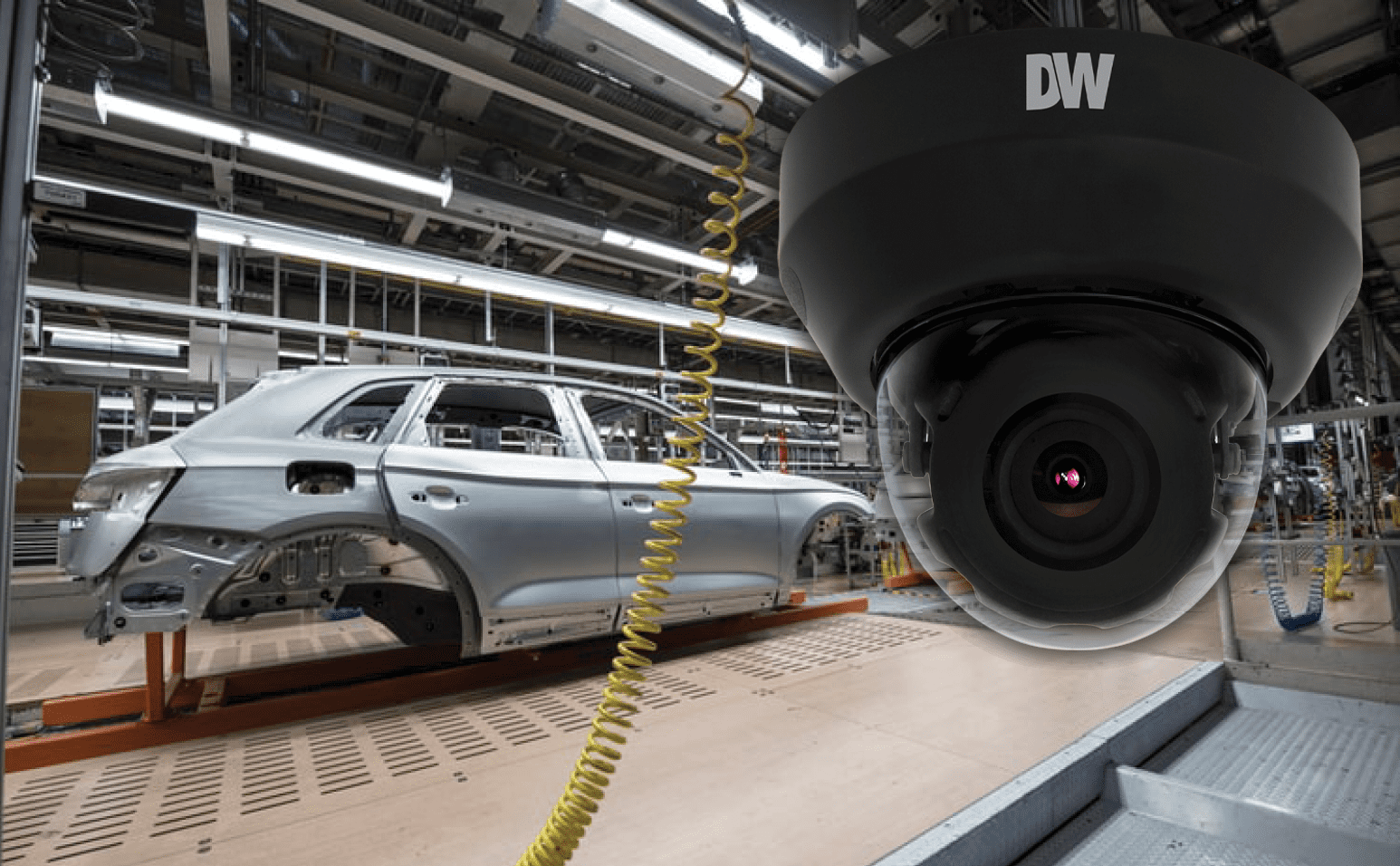 The better business security cameras get, the more confusing the conversation surround them seems to be. Unless you’re a techie or a videographer, it’s easy to get bogged down by terms like “PoE” or “network terminal server.” While some of these terms are better left to those who engineer your business security solutions (like EPS), some of the more technical details of surveillance systems are important for owners and operators to understand.
The better business security cameras get, the more confusing the conversation surround them seems to be. Unless you’re a techie or a videographer, it’s easy to get bogged down by terms like “PoE” or “network terminal server.” While some of these terms are better left to those who engineer your business security solutions (like EPS), some of the more technical details of surveillance systems are important for owners and operators to understand.
One of the most important aspects of a surveillance system is camera resolution—and even that can be a tricky subject to tackle. Specifically, the conversation around “HD” cameras is a common one, but one that the average business owner may not be well-versed in. While there is a certain amount of technobabble that goes into the explanation, HD simply refers to a higher standard for video capture and playback—a standard that improves the baseline quality and viability for business surveillance systems of all shapes and sizes.
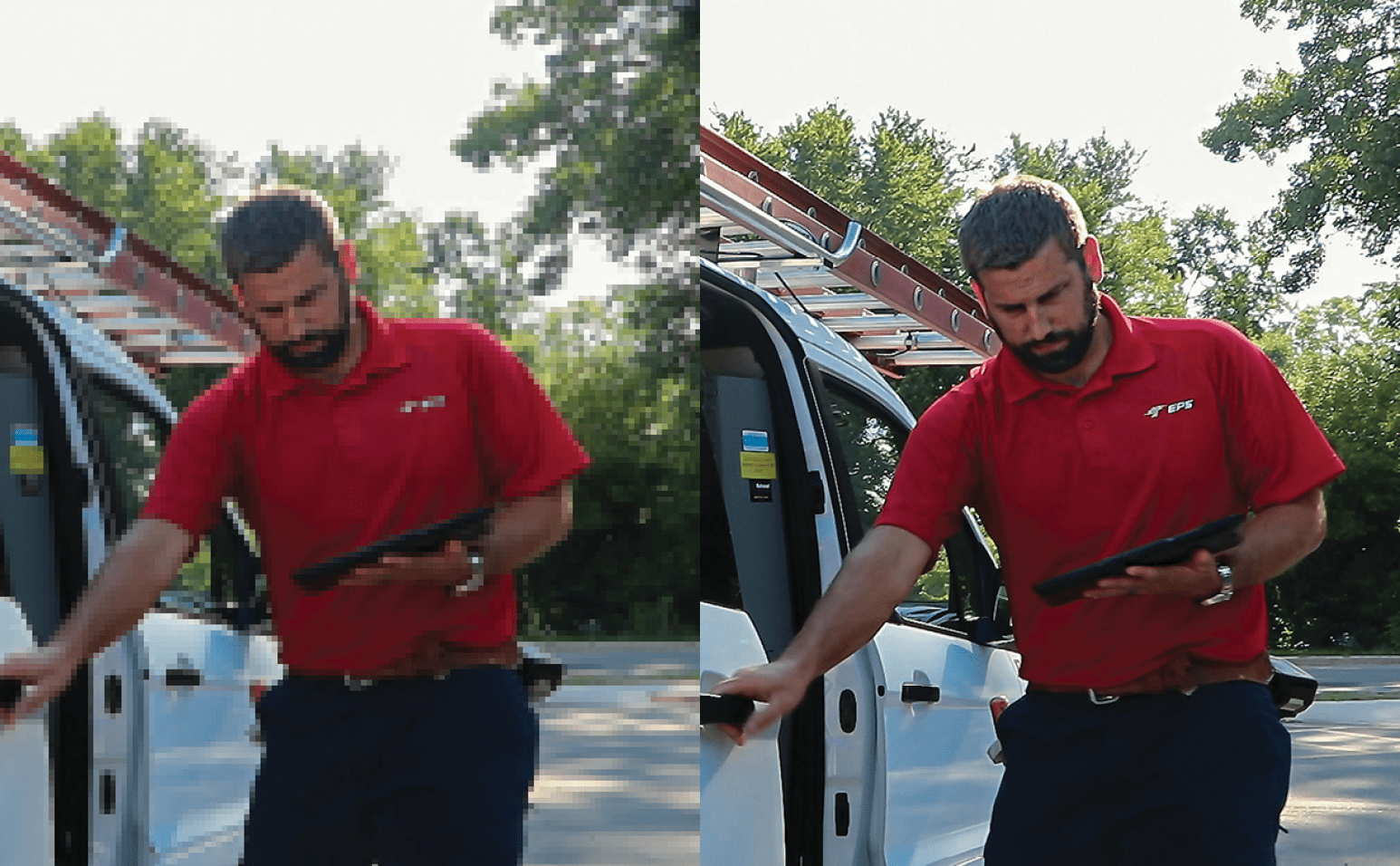 It’s all about the pixels
It’s all about the pixels
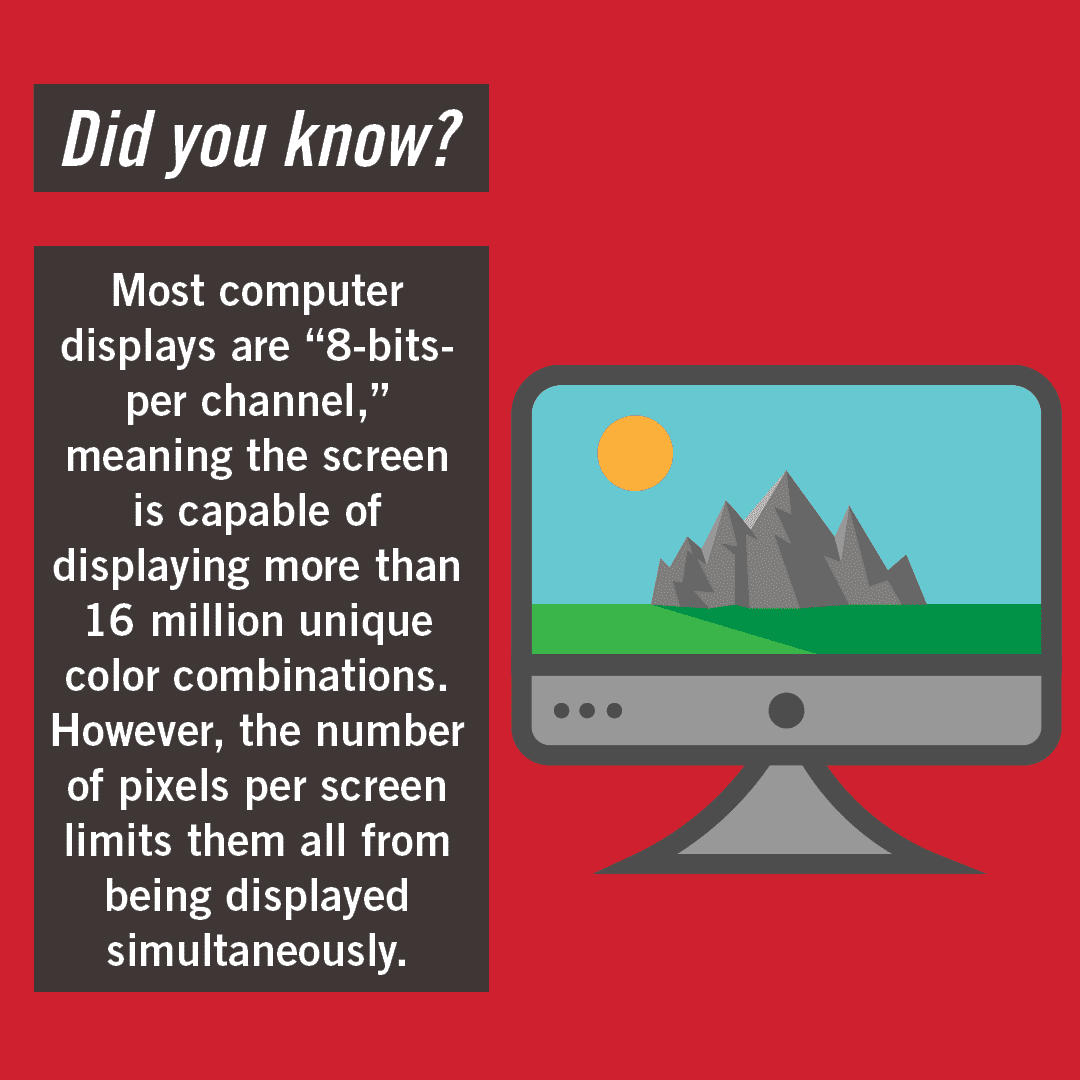
“HD” stands for “high definition”—but what does that mean, and what determines which cameras are “high definition” and which ones are not?
To understand what “high definition” means regarding cameras, you must have a fundamental understanding of pixels. The word “pixel” is short for “picture element” and it the smallest controllable element on a digital display. The screen you’re reading on right now is comprised of thousands, if not millions, of tiny little dots, each one assigned to display a single color. Think of it like this: every physical object in nature is made up of one of 92 types of atoms, but they are combined in unique ways to create you and your phone and your cat. Like this, pixels can be blended on a screen to represent every word and image displayed on your screen.
Digital surveillance cameras take light in through a photosensitive devices known as image sensors. The image sensors use tiny light-capturing cells known as “photosites” which convert the light of the captured image into pixels—pixels which is eventually “reassembled” on a screen or monitor in the correct order. The more pixels that are used in a video surveillance camera, the smaller the pixels are—meaning the final image displayed (on a screen capable of showing high detail) is clearer when captured by cameras using more pixels versus cameras using less.
The long and short of it? The more pixels a camera uses, the higher the quality of the video it produces.
So what do pixels have to do with so-called “HD cameras?”
Before understanding why some cameras are considered “high definition,” or “HD,” we need to take a look at the technology preceding it. The “standard definition” cameras that preceded HD created video with at a resolution of 720 x 480—basically, images using 345,600 pixels. The images produced by those cameras were blurry and dull compared to the HD cameras so common today.
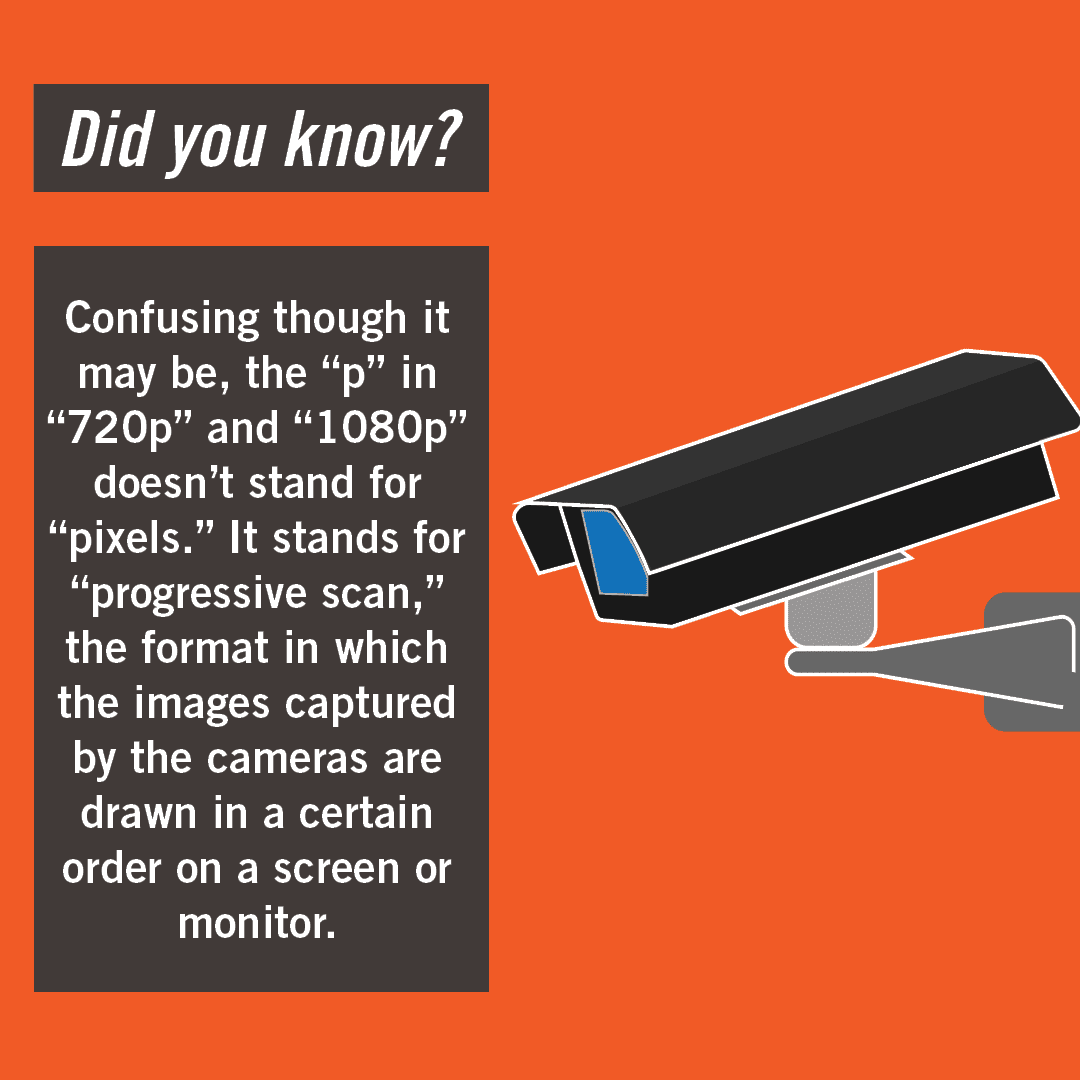 The improvement in image quality from SD resolution to HD resolution is impressive. Only two specific resolutions are considered HD:
The improvement in image quality from SD resolution to HD resolution is impressive. Only two specific resolutions are considered HD:
1280 x 720.
Commonly, these are often referred to as 720p cameras.
1920 x 1080.
In the industry, these cameras are often referred to as 1080p cameras.
These numbers reveal the number of pixels each type of camera uses in creating digital images. A 720p camera utilizes 921,600 pixels (1280 x 720); a 1080p camera uses over 2 million (1920 x 1080). Remember that “standard definition” cameras only used 345,000 pixels—only roughly 37% of the pixels used in an 720p HD camera and a measly 17% of those used in a 1080p HD camera. While both the 720p and 1080p cameras are considered “high definition,” 1080p cameras contain considerably more pixels and thus produce slightly sharper images than their 720p counterparts.
Of course, quality video doesn’t just come down to image quality. Videos consist of rapidly displayed static images, and the frequency at which these images appear, called the frame rate, effects the video quality as well. When a frame rate is too low, the objects moving in the video “lurch” or “stagger” through the image versus appearing to move seamlessly. Alternatively, having too high of a frame rate can make the viewer feel as though the image is unrealistically smooth. Most movies played in theaters show 24 frames per second, or FPS, while some cameras are capable of as many as 60fps. The “best” frame rate differs from screen to screen, but it is generally agreed upon that 1080p cameras run best when displaying 30fps.
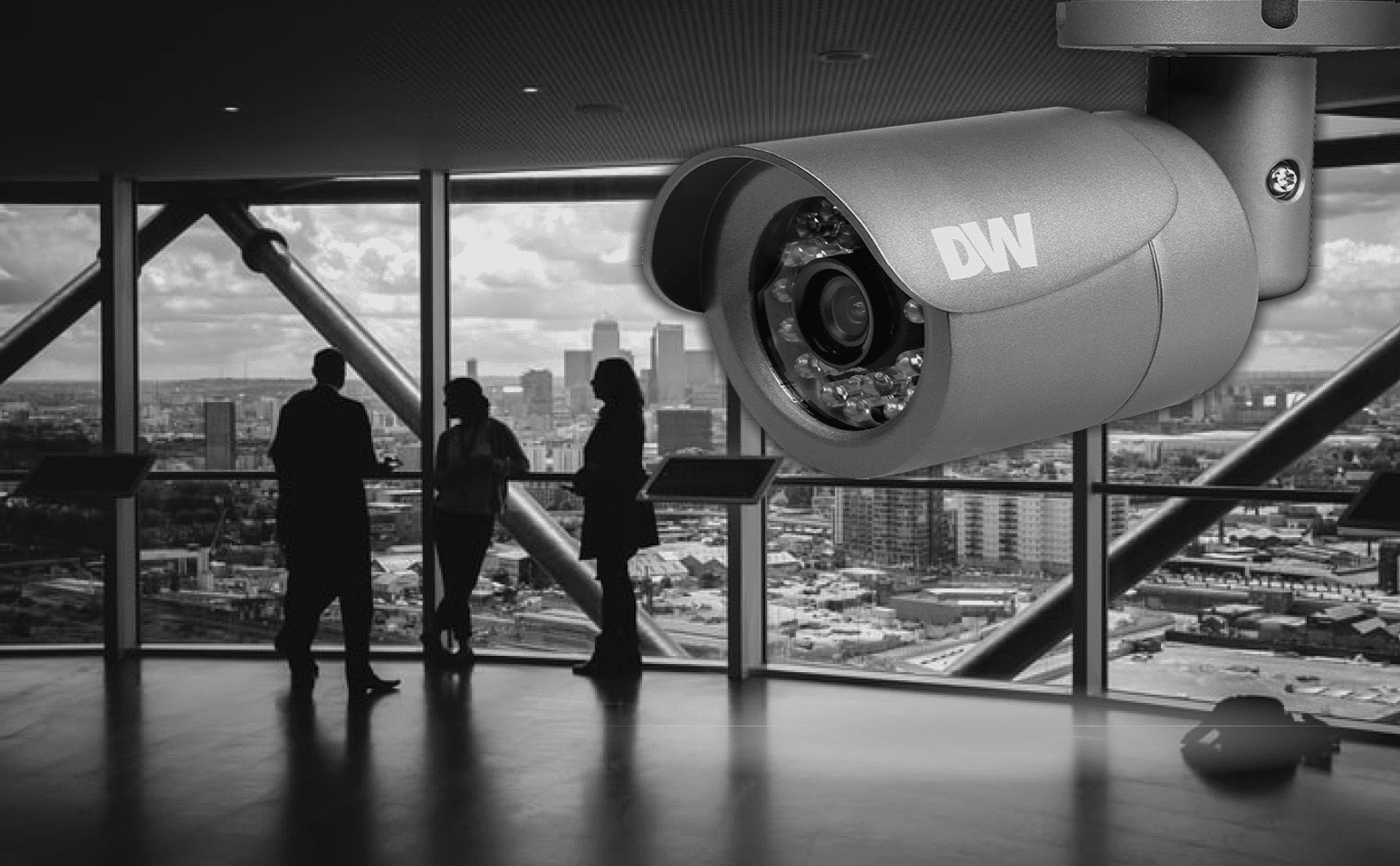 So how does this impact my business?
So how does this impact my business?
HD cameras are a massive improvement over the old, grainy box cameras of yore. When HD cameras are coupled with hardware innovations such as dome, multi-sensor, and PTZ cameras, business surveillance cameras can capture crystal-clear images from all over the inside and outside of a facility. Camera clarity is an absolutely essential component of a comprehensive surveillance system, as muddied, lifeless images can miss crucial details that better cameras might have captured such as license plates, facial features, or important events occurring farther out in the distance. Business owners and operators lean on their video surveillance systems to analyze details of an emergency after it occurs, so ensuring the captured images are vivid and lively versus muted and confusing is half the battle. (The other half is largely camera placement, and we’ve written about that, too.)
Higher resolution cameras exist for those who require them, including the increasingly popular 4K (8.2 million pixels) and even massive 20MP cameras that pack a whopping 20 million pixels into an image. However, the downside to such intense camera specifications is that they require substantially more bandwidth than their HD counterparts, potentially bogging down larger surveillance systems with a high number of cameras. With a few niche exceptions, 1080p cameras especially are widely viewed as the “minimal standard” resolution for security cameras: you can certainly go higher, but you usually wouldn’t want to go much lower. World-leading video surveillance manufacturers such as AXIS Communications® and Digital Watchdog® sell 1080p/2MP cameras in different makes and models to meet a number of coverage needs.
HD protection of what matters most
HD cameras help to keep an eye on your business when you can’t, but devising a surveillance system that fits the unique layout of your facility while protecting its most vulnerable points requires more than just a “point and shoot” approach. True coverage of a property starts with a professional security provider, and few have more experience with business security than EPS Security. Our consultants and engineers will work with you to identify high-risk areas and points of interest to engineer a security solution that fits your coverage needs. What’s more, we view our relationship with our customers as a partnership. Our team is dedicated to the ongoing technical support and maintenance of your system long after your last HD camera has been installed.
If your business is unprotected—or if your existing surveillance system requires more than a little TLC—you can’t afford to wait. Let us show you what we’ve learned in our six decades of protecting Michigan businesses and sleep a little easier with some HD eyes on what matters most to you.
